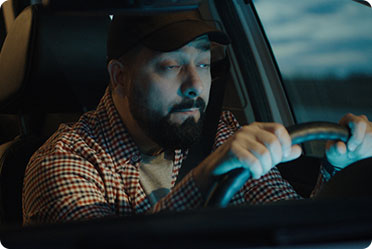
Here’s the scenario: You spent a great weekend at the shore during the Fourth of July weekend. It’s Monday night. You want to avoid the evening traffic of vacationers and the morning rush-hour traffic on the AC Expressway. So, you decide to hit the road for home at around 10 p.m. At the Hammonton Exit, you start to feel the activity of the weekend catch-up to you. Your eyelids are getting heavy, but you know that you only have 30 minutes until you are home. You tell yourself that you can make it without pulling off the highway to wake yourself up or, at least, taking a short nap.
This is a scenario that you have probably lived through more times than can be counted. And you made it home safely each time. However, the next time this happens, you should reconsider trying to get home without taking more appropriate measures. Studies have shown that drowsy driving is just as dangerous as drunk driving and can lead to catastrophic results.
According to a 1999 joint report by the National Highway Traffic Safety Administration and the National Center for Sleep Disorder Research, six characteristics for drowsy driving accidents were identified:
1) Drowsy driving accidents usually occur late at night [however, AAA reports that one in four drowsy driving accidents occur in the afternoon]; 2) These accidents are likely to be serious, because they typically occur on high-speed roads; 3) These accidents usually involve a car leaving the roadway; 4) Drowsy drivers usually do not attempt to avoid a crash; and 5) Most of these accidents occur when there is a single occupant in the car.
In a 1997 sleep-alcohol study, researchers concluded that certain levels of sleep deprivation have repercussions similar to drinking alcohol. The study found that, after 17 hours of wakefulness, a person’s motor skills were affected in the same manner as if that person had a blood alcohol concentration (BAC) of .05%. After 24 hours of wakefulness, the person’s psychomotor performance was affected as if that person had a BAC of .10%.
The National Highway Traffic Safety Administration estimates that falling asleep while driving results in 1,550 deaths, 71,000 injuries and more than 100,000 accidents each year.
In short, drowsy driving is as hazardous to yourself and others as drunk driving. Moreover, prosecutors will often bring vehicular homicide or manslaughter charges against drivers who fall asleep at the wheel and cause the death of another person on the road. Obviously, drowsy driving should not be taken lightly. Even the best drivers succumb to tiredness, so make sure that you take the proper steps to avoid the consequences of a drowsy driving.
Leckerman Law focuses on safeguarding the
rights of individuals charged with DUI, DWI, DAI, and
other alcohol-related criminal offenses - Call Us Now For
NJ DWI (856) 429-2323 | For PA DUI (215) 496-9292